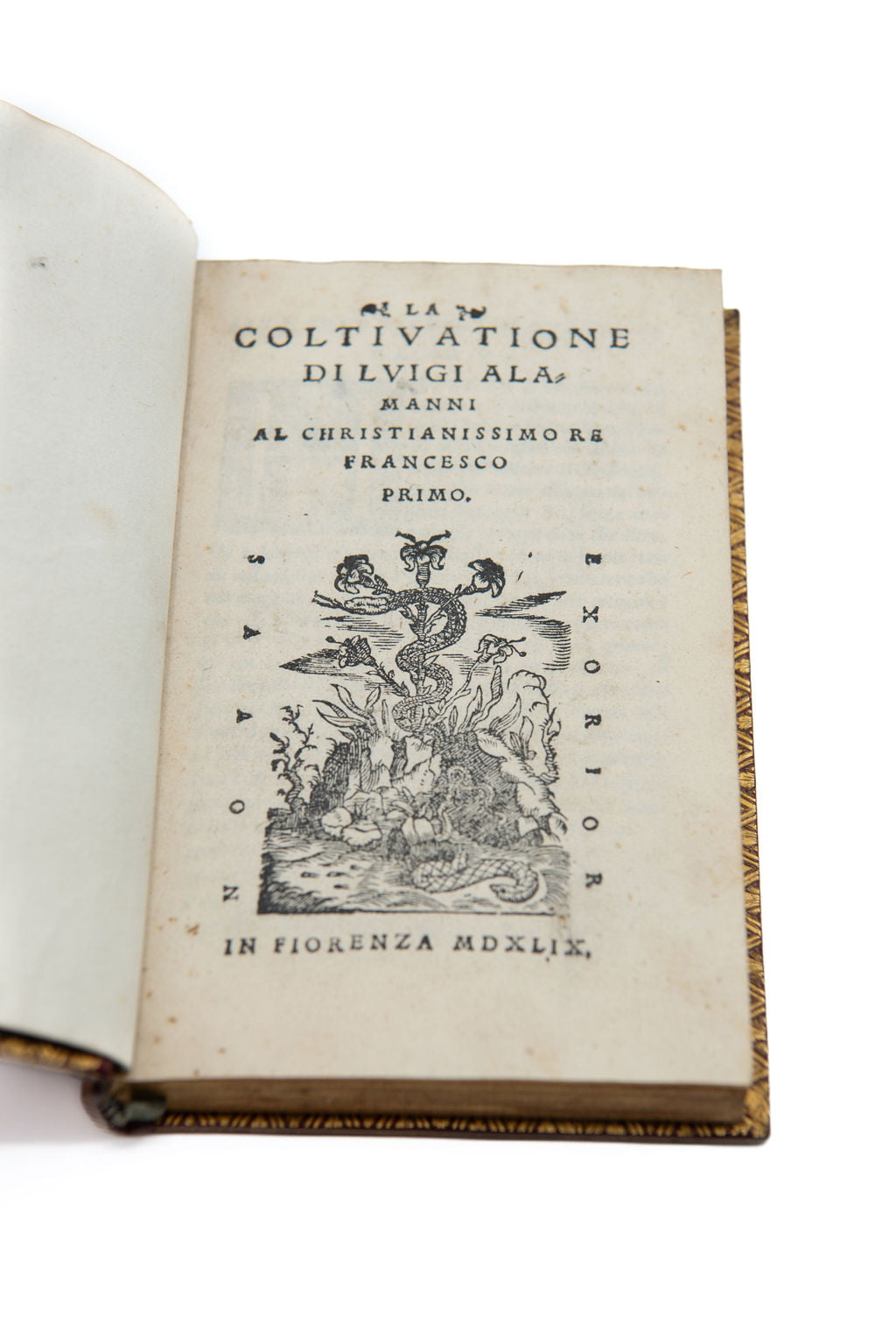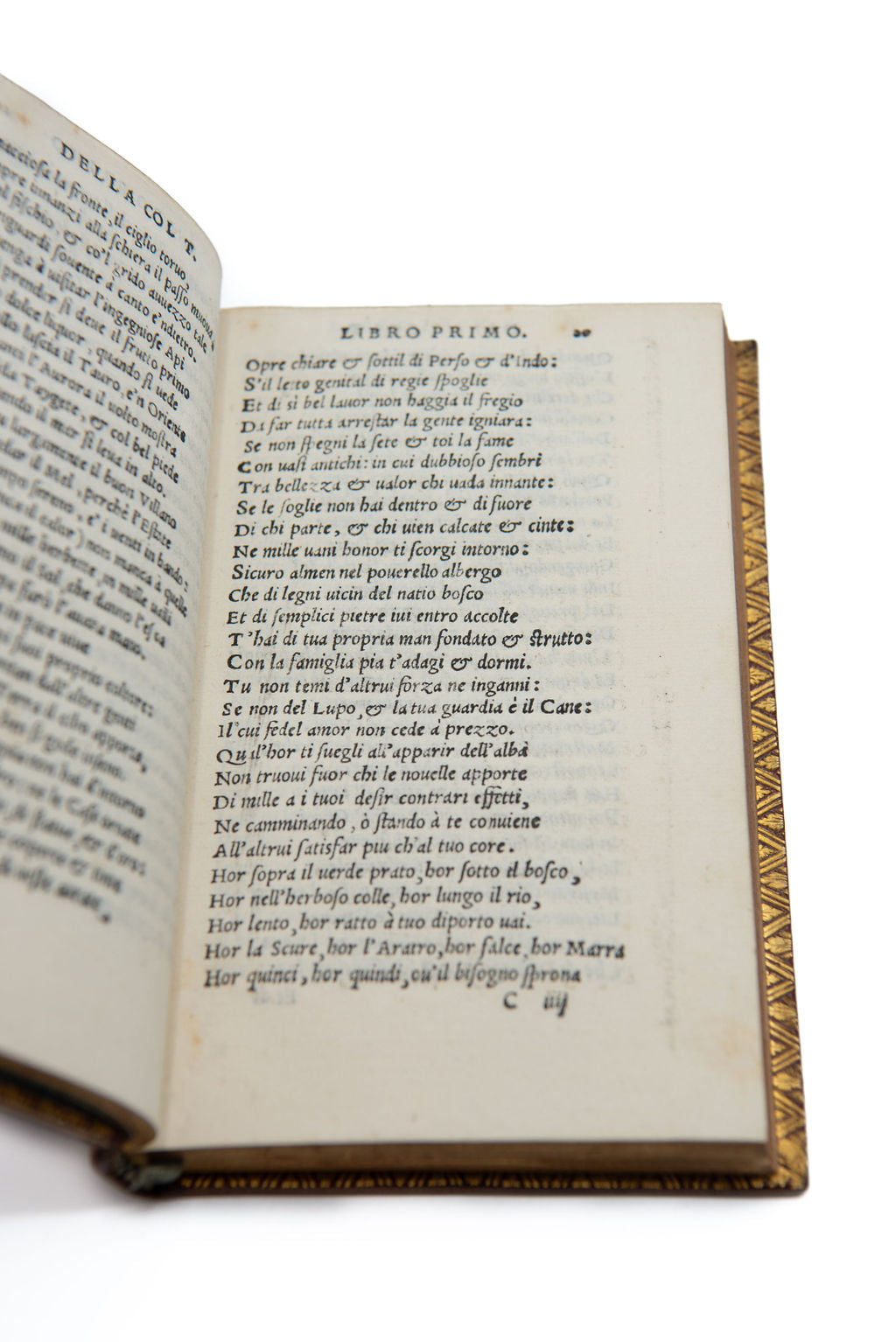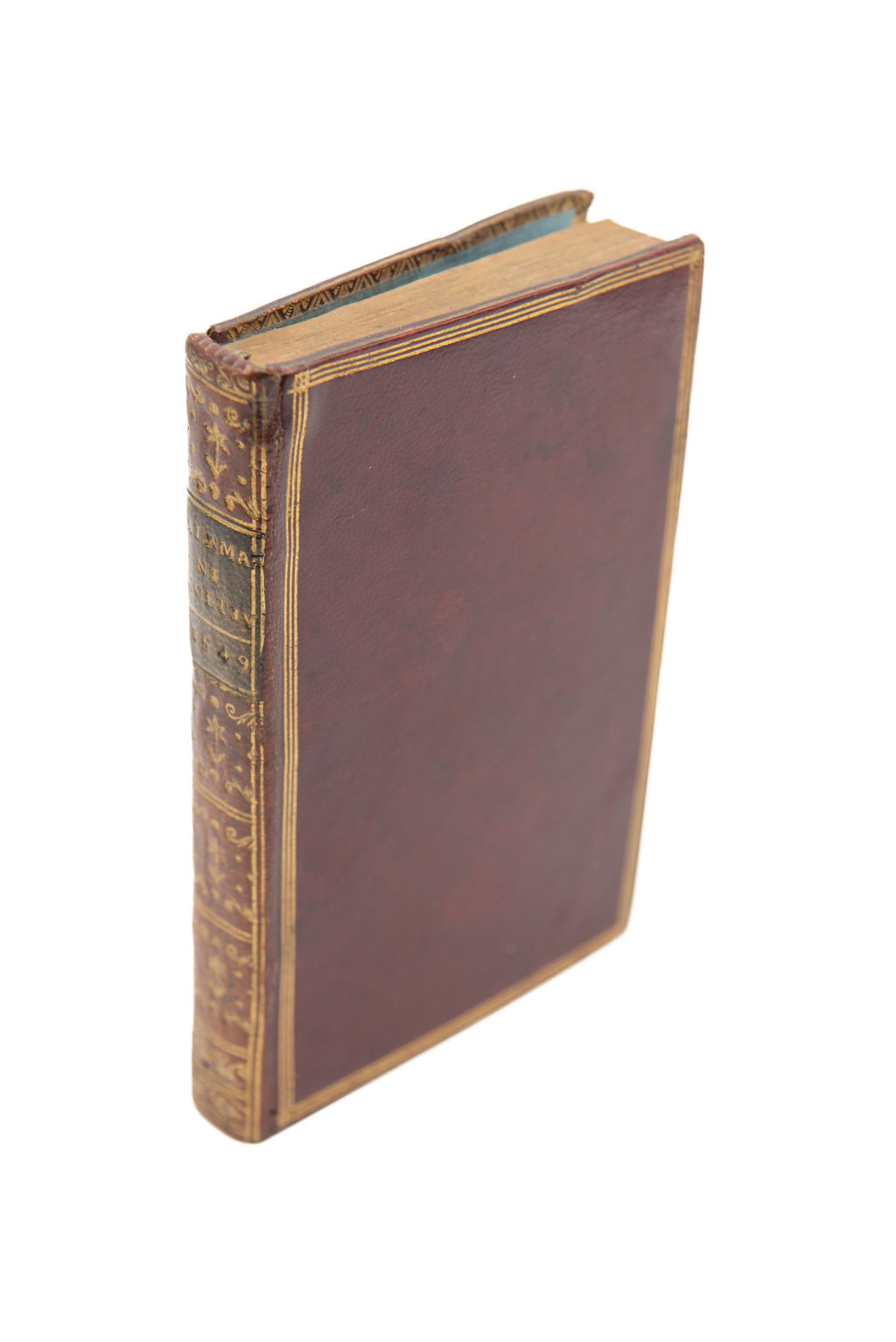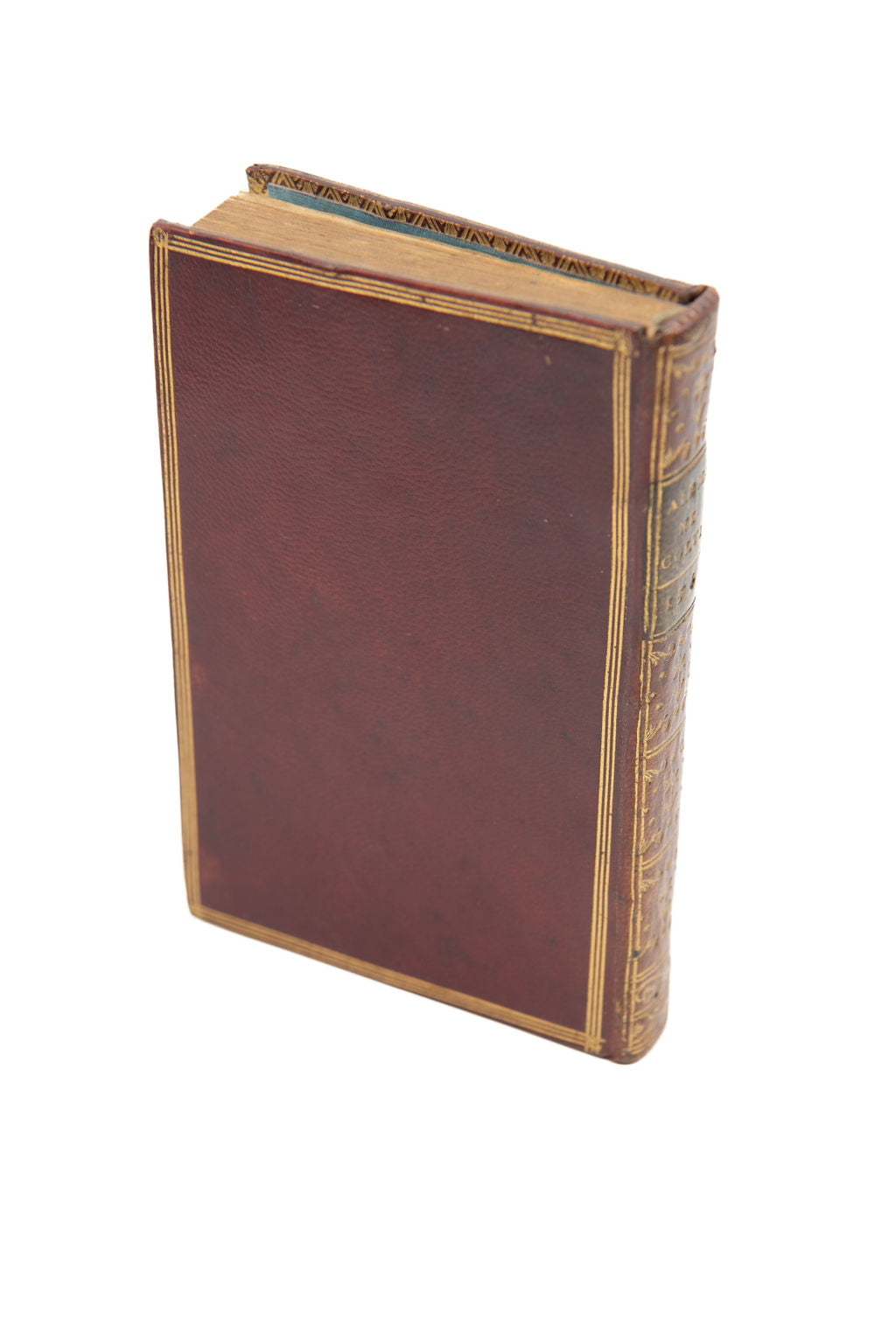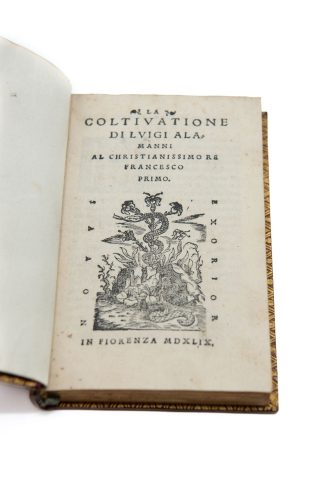ALAMANNI, Luigi.
IN THE STYLE OF DEROME
La Coltivazione
Florence, Bernardo Giunti, 1549£3,500.00
8vo, ff. 102 (ii). Italic and Roman letter. Printer’s device to t-p and verso of last, one woodcut historiated initial, typographical ornaments. Very slight age yellowing to first gathering, intermittent light marginal foxing, minor waterstain to upper margin of final gathering, paper flaw to lower blank corner of f. 26, small wormhole to last three ff. affecting one letter. A very good copy in superb early C18 French red morocco, covers bordered with a triple gilt rule, small circular tools at corners, inner dentelles gilt, cover’s edges gilt. Spine double gilt ruled in compartments filled with gilt flower, leaves, dots and swirl tools, title label gilt. Blue watered silk endpapers, matching blue silk bookmark, a.e.g. Bookplate of Wilfred Merton (1888-1957).
A beautifully bound copy in top quality morocco of this finely printed edition of Alamanni’s didactic poem on agriculture. An Italian statesman and poet, Luigi Alamanni (1495-1556) studied philosophy in Florence and attended gatherings at the Orti Oricellari, a famous meeting place for the Florentine social and intellectual élite and an anti-Medicean circle. Here, he became friends with Machiavelli. In 1522, after participating in an unsuccessful conspiracy against Giulio de’ Medici (afterwards Pope Clement VII), he fled to France and became one of the leading poets at the court of King Francis I.
‘La Coltivazione’ is Alemanni’s most celebrated and famous work, dedicated to King Francis I and first published in Paris by Robert Estienne in 1546. Drawing inspiration from Vergil’s Georgics, Rucellai’s ‘Api’ (= bees) and Columella’s Latin works on agronomy, in this didactic poem Alemanni describes everything concerning cultivation and rustic life. The work is divided into six books and elegantly written in ‘versi sciolti’, namely hendecasyllables without rhyme. “This poem has preserved a considerable reputation, from the great purity and elegance of the style, as well as from the methodical arrangement and the sagacity of its agricultural precepts” (Simonde de Sismondi).
The fine red morocco binding is similar in style to the bindings made by the Derome le Jeune (1731-1788, see Bibliotheca Bibliographica Breslaueriana n. 17) and Louis Doceur (d. 1769; see ‘Louis Doceur 1746’ on Cyclopaedia.org). Two exceptionally skilful craftsmen, they are among the most celebrated eighteen century French binders: their richly gilt and decorated bindings were sought after and expensive. The inner dentelle motif and the small dot tool with a cross appear almost identical to a binding signed by Antoine Durand (active c. 1765, see ‘Antoine Durand 1769’ on Cyclopaedia.org for a similar binding sold at Christies in 2004). The design of the compartments on the spine is also very similar. Master bookbinder from 1765, Durand married the daughter of the king’s bookbinder, Guillaume Mercier. “Durand was named official binder of the Royal Library as well as binder for the city of Paris, he went on to become the binder of the comte de Artois and the duc d’Angoulême […]. This signifies that he was a busy and successful binder who also moved in Royal circles” (Cyclopaedia.org).
This copy is from the library of the engraver and printer Wilfred Merton (1888-1957), who was also an avid book and manuscript collector specialising in rare Oriental printing and papyri.
USTC 808173; Adams A411; BM STC It. p. 12; Brunet I, p. 125-26; Graesse I, p. 50; Pritzel 112. J.C.L. Simonde de Sismondi, Historical View of the Literature of the South of Europe (London 1846).In stock


